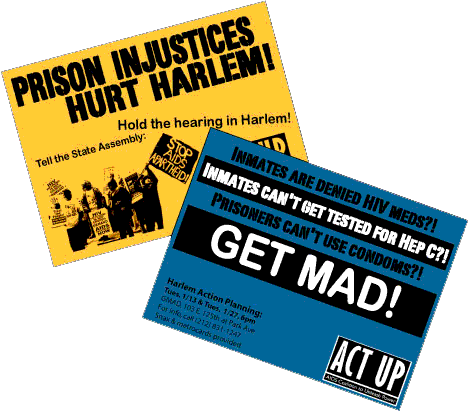A RE-EXAMINATION OF THE JUSTIFICATIONS FOR
COMPASSIONATE RELEASE
WILLIAM W. BERRY III*
Maryland Law Review
17 June 2009
I. INTRODUCTION
“Justice is the tolerable accommodation of the conflicting interests of society, and I don’t believe there is any royal road to attain such accommodation concretely.”—Judge Learned Hand1
Conflicting interests lie at the heart of the sentencing process. Not limited to the obvious competing interests of the state and the offender, the state’s broader punishment interests can often conflict.
The state’s interest in giving an offender his just deserts, for instance, competes with its interests in deterring others from committing the same crime, incapacitating the offender to protect society, and rehabilitating the offender.2 The battle for supremacy between such interests often occurs when a judge considers whether certain evidence is grounds for mitigating a sentence.3
Although parole was abolished with the passage of the Sentencing Reform Act of 1984,4 the potential for mitigating a federal sentence does not end with the sentencing decision of the federal trial judge. Rule 35(b) of the Federal Rules of Criminal Procedure authorizes the court, upon motion by the government, to reduce the sentence to reflect substantial assistance provided to the government by the defendant after the sentence became final.5 In addition, where the United States Sentencing Commission has subsequently reduced the guideline range used to sentence the defendant, the court may reduce the sentence upon a motion by the defendant or the Director of the Bureau of Prisons.6
Federal law, unbeknownst to many, includes another stipulation that authorizes the immediate release of federal prisoners. This safety valve provision demands that the Director move on behalf of the prisoner to secure the prisoner’s compassionate release.7 Not a veiled version of parole, this compassionate release provision is only to be used in circumstances deemed “extraordinary and compelling.”8 The Bureau of Prisons has read this language very narrowly for many years, considering only terminally ill inmates as candidates for compassionate release.9 In November 2007, however, the Sentencing Commission modified its Commentary to the Sentencing Guidelines, defining for the first time criteria for determining circumstances that should be deemed “extraordinary and compelling.” Specifically, the Commission’s new Commentary provides that extraordinary and compelling circumstances can include: (1) terminal illness, (2) debilitating physical conditions that prevent inmate self-care, and (3) death or incapacitation of the only family member able to care for a minor child.10
In addition, the Commentary provides that compassionate release may be granted where, “[a]s determined by the Director of the Bureau of Prisons, there exists in the defendant’s case an extraordinary and compelling reason other than, or in combination with, the [three] reasons described [previously].”11
As explained below, the Bureau of Prisons has ignored, in many ways, the broader statutory language as well as its own regulations in its decision to limit the application of “compassionate release” to prisoners who are terminally ill. By limiting the use of the safety valve to cases of “medical parole,” the Bureau eschews the more difficult categories of prisoners who, for one of the reasons discussed below, may be considered for release given the facts of their particular situation. The Bureau of Prisons, in limiting its need to review compassionate release petitions to medical cases, thus abandons the flexibility to consider truly compelling cases, perhaps in part for a lack of method by which to separate the meritorious cases from the many that do not rise to the level of extraordinary and compelling.
This Article will consider the theoretical justifications for compassionate release in an attempt to develop a framework to evaluate what circumstances rise to the level of “extraordinary and compelling.”
First, the Article will argue that the state’s purposes for punishment, whether retributive or utilitarian, do not by themselves justify the compassionate release of inmates. As a result, this Article will propose that the basis for compassionate release should lie in the broader interests of the state. Thus, the Article will argue that the non-penal interests of the state (in light of the “extraordinary and compelling” factual circumstance) must clearly outweigh the state’s penological interest in the inmate serving the entire sentence before compassionate release
may be justified.
Part II of this Article will explain the significance of the compassionate release provision in light of the large number of inmates in federal prison, and will provide a vignette of one prisoner’s alleged “extraordinary and compelling” circumstance that was rejected by the Bureau of Prisons Director.
Part III will outline the statutory and administrative landscape surrounding the compassionate release provision and describe the Sentencing Commission’s adoption of the guideline commentary.
Part IV of the Article will argue that the traditional purposes of punishment—just deserts, deterrence, incapacitation, and rehabilitation—cannot alone serve as the basis for awarding compassionate release to prisoners. Part V will argue that the basis for compassionate release should lie in the broader, non-penal interests of the state, and that circumstances should be considered extraordinary and compelling only when such interests greatly outweigh the state’s penological interests as applied to the prisoner at issue…
Finish article at: http://www.law.umaryland.edu/academics/journals/mdlr/print/articles/68_4-404.pdf

































No comments:
Post a Comment